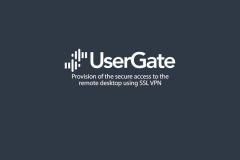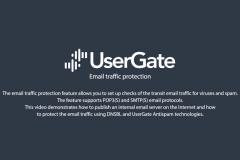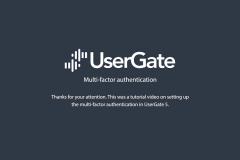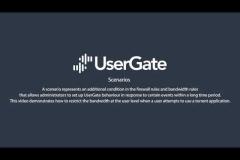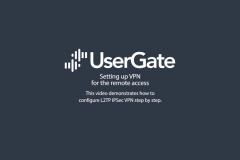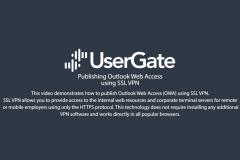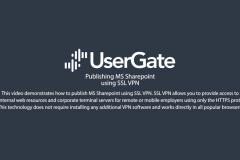UserGate 5.x
UserGate 5. Provision of the secure access to the remote desktop using SSL VPN
This video demonstrates how to access the remote server's desktop (RDP) using SSL VPN and multi-factor authentication. SSL VPN allows you to provide access to the internal web resources and corporate terminal servers for remote or mobile employers using only the HTTPS protocol. This technology does not require installing any additional VPN software and works directly in all popular browsers.
UserGate 5. Hiding web page elements by injection of an arbitrary program code
The web injector allows you to embed a given program code into the web pages displayed to users. This may be convenient in various situations, e.g. when you want to add a custom advertisement or counters to a page or hide certain elements on web pages. In this example, we will demonstrate how to hide web page elements by applying special styles to them.
UserGate 5. Email traffic protection
The email traffic protection feature allows you to set up checks of the transit email traffic for viruses and spam. The feature supports POP3(S) and SMTP(S) email protocols. This video demonstrates how to publish an internal email server on the Internet and how to protect the email traffic using DNSBL and UserGate Antispam technologies.
UserGate 5. Multi-factor authentication
Multi-factor authentication is a user identification method that combines two or more different authentication data types. An additional security level provides better protection of accounts from unauthorized access.
UserGate 5. Utilizing scenarios for the torrent traffic restrictions
A scenario represents an additional condition in the firewall rules and bandwidth rules that allows administrators to set up UserGate behaviour in response to certain events within a long time period. This video demonstrates how to restrict the bandwidth at the user level when a user attempts to use a torrent application.
UserGate 5. Setting up VPN for the remote access
This video demonstrates how to configure L2TP IPSec VPN step by step.
UserGate 5. Publishing Outlook Web Access using SSL VPN
This video demonstrates how to publish Outlook Web Access (OWA) using SSL VPN. SSL VPN allows you to provide access to the internal web resources and corporate terminal servers for remote or mobile employers using only the HTTPS protocol. This technology does not require installing any additional VPN software and works directly in all popular browsers.
UserGate 5. Publishing Outlook Web Access using reverse-proxy
This video demonstrates how to publish Outlook Web Access (OWA) using reverse-proxy which provides you with the following advantages:
- Publishing of HTTP servers using HTTPS, and vice versa
- Balancing of requests to web server farms;
- Ability to limit access to the published servers with certain Useragents;
- Ability to replace domains and paths of the published servers.
UserGate 5. Publishing MS Sharepoint using SSL VPN
This video demonstrates how to publish MS Sharepoint using SSL VPN. SSL VPN allows you to provide access to the internal web resources and corporate terminal servers for remote or mobile employers using only the HTTPS protocol. This technology does not require installing any additional VPN software and works directly in all popular browsers.
